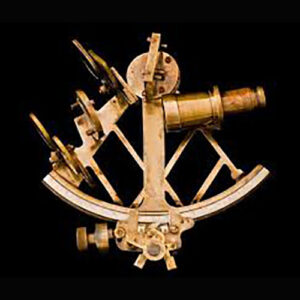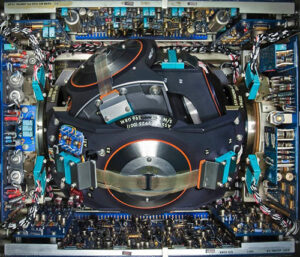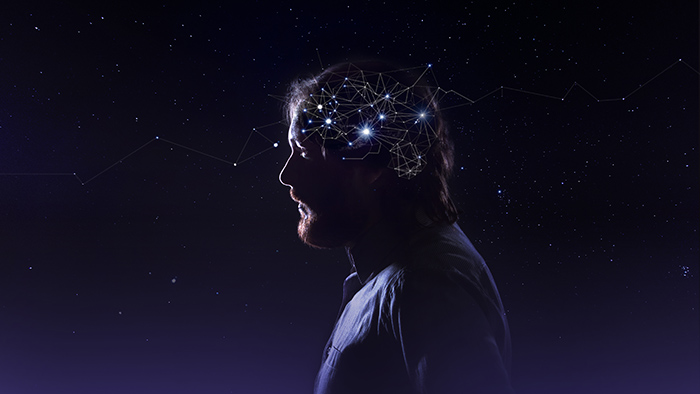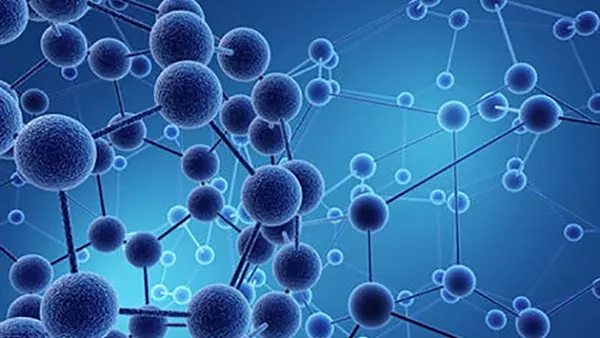Synthetic Intelligence
Origins
Many of the inventions that have changed our world happened because it was their time to happen. Others, like our sapiens, come “out of left field,” the result of a series of unforeseeable influences and events, pieces of a puzzle that come together at a certain point in time independent of and often contrary to the technology mainstream.
While it should be no surprise that the most innovative ideas arise within a single mind or a very small team, why has Synthetic Intelligence sprung from the New Sapience team and not some brilliant young AI researchers at Stanford or MIT?
Many of the inventions that have changed our world happened because it was their time to happen. Others, like our sapiens, come “out of left field,” the result of a series of unforeseeable influences and events, pieces of a puzzle that come together at a certain point in time independent of and often contrary to the technology mainstream.
While it should be no surprise that the most innovative ideas arise within a single mind or a very small team, why has Synthetic Intelligence sprung from the New Sapience team and not some brilliant young AI researchers at Stanford or MIT?
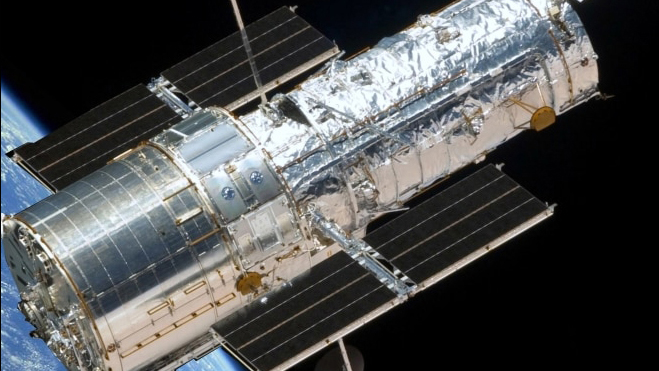
The story of Synthetic Intelligence is an odyssey of personal intellectual insight and practical experience.
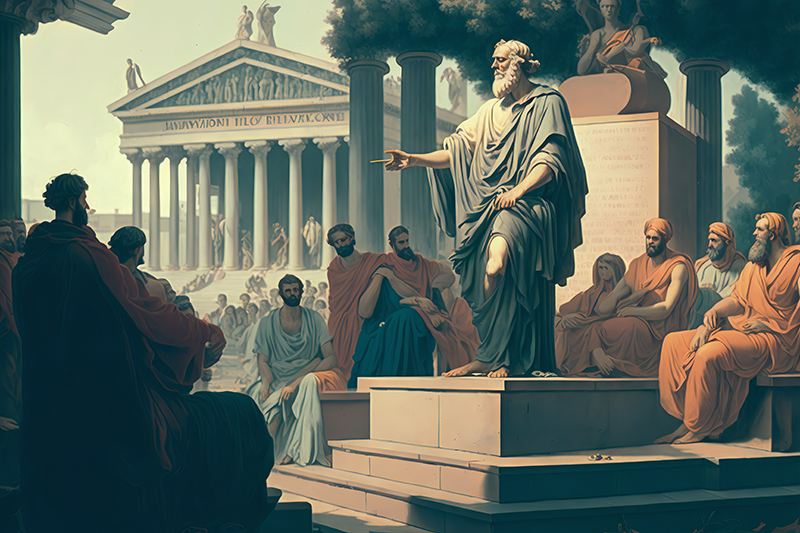
Philosophical Foundations
The journey begins not in a computer lab but in a “Great Books” seminar. Bryant Cruse, who would one day found New Sapience, was an undergraduate at St. John’s College in Annapolis, Maryland, where the curriculum is an intensive study of acknowledged great minds of Western Culture. The questions, “What is truth?”, “What is the relationship between ideas and reality?”, and “What is reality itself?”, were asked again and again. Bryant formed his own thesis, a radical departure from traditional epistemologies, which focused on debate about truth, belief, and the justification of individual assertions.
Reality for human beings, he conjectured, is the intersection of human cognitive and sensory apparatus and whatever it is they interact with. This approach leads to the conclusion that the most certain and reliable knowledge we have about reality is models, intellectual constructs having internal consistency while conveying some practical utility. In other words, theories. But we do not say of theories that they are true or false, only that they are better or worse at explaining things.
The journey begins not in a computer lab but in a “Great Books” seminar. Bryant Cruse, who would one day found New Sapience, was an undergraduate at St. John’s College in Annapolis, Maryland, where the curriculum is an intensive study of acknowledged great minds of Western Culture. The questions, “What is truth?”, “What is the relationship between ideas and reality?”, and “What is reality itself?”, were asked again and again. Bryant formed his own thesis, a radical departure from traditional epistemologies, which focused on debate about truth, belief, and the justification of individual assertions.
Reality for human beings, he conjectured, is the intersection of human cognitive and sensory apparatus and whatever it is they interact with. This approach leads to the conclusion that the most certain and reliable knowledge we have about reality is models, intellectual constructs having internal consistency while conveying some practical utility. In other words, theories. But we do not say of theories that they are true or false, only that they are better or worse at explaining things.
The ancients constructed a model of the cosmos with the Earth at the center.
“How could they be so wrong?”, we smugly ask today. But their mathematics was elegant. More important, their model enabled them to do many useful things like know when to plant their crops and, with simple instruments like the sextant pictured above, how to navigate a ship on the oceans.
Newton’s model, with the sun at the center and replacing the ancient preference for regular circular motion with forces at a distance, explains far more phenomena – from the position of the moon to the trajectory of a falling apple – making it a superior model.
After St. John’s College, Cruse served as a Naval Aviator and used a thoroughly Newtonian inertial navigation system (INS), pictured below, while flying long-range aircraft over the ocean. The INS was an elegant invention, but very complex and none too reliable. When it failed, the air crew fell back to an aviation version of the humble sextant and tables of celestial observations (essentially the same as those compiled by Claudius Ptolemy in ancient Alexandria) to find their position.
These experiences and considerations had a profound impact on what Cruse understands knowledge to be, and have proven fundamental to the development of sapiens technology.
The ancients constructed a model of the cosmos with the Earth at the center.
“How could they be so wrong?”, we smugly ask today. But their mathematics was elegant. More important, their model enabled them to do many useful things like know when to plant their crops and, with simple instruments like the sextant pictured above, how to navigate a ship on the oceans.
Newton’s model, with the sun at the center and replacing the ancient preference for regular circular motion with forces at a distance, explains far more phenomena – from the position of the moon to the trajectory of a falling apple – making it a superior model.
After St. John’s College, Cruse served as a Naval Aviator and used a thoroughly Newtonian inertial navigation system (INS), pictured below, while flying long-range aircraft over the ocean. The INS was an elegant invention, but very complex and none too reliable. When it failed, the air crew fell back to an aviation version of the humble sextant and tables of celestial observations (essentially the same as those compiled by Claudius Ptolemy in ancient Alexandria) to find their position.
These experiences and considerations had a profound impact on what Cruse understands knowledge to be, and have proven fundamental to the development of sapiens technology.
Practical Rocket Science
At first, Symbolic AI looked promising.
NASA sent him to the Lockheed Palo Alto research lab for a 6-month residency in AI. While there he became the driving force behind the first real-time expert system shell, and later co-founded Talarian Corporation, originally with a focus on space systems automation.
But rule-based systems, now termed Symbolic AI, proved not to be a practical, scalable solution. Their downfall was essentially a failure in epistemology. They were called knowledge-based systems, but knowledge is not just a bunch facts connected by inference chains.
In 1991, at his second startup, Altair Aerospace, Cruse led a team which succeeded in developing a vastly more efficient methodology by which engineers could specify their knowledge of space systems as a model that could be directly imported into a computer program. This comprehensively solved the telemetry analysis problem.
Putting a detailed knowledge model of the spacecraft in the software made it possible to accurately predict the behavior of the vehicle based on thousands of telemetry measurements with very simple processing algorithms. Mission control systems based on the approach could run on PCs while traditional systems required mainframes.
At first, Symbolic AI looked promising.
NASA sent him to the Lockheed Palo Alto research lab for a 6-month residency in AI. While there he became the driving force behind the first real-time expert system shell, and later co-founded Talarian Corporation, originally with a focus on space systems automation.
But rule-based systems, now termed Symbolic AI, proved not to be a practical, scalable solution. Their downfall was essentially a failure in epistemology. They were called knowledge-based systems, but knowledge is not just a bunch facts connected by inference chains.
In 1991, at his second startup, Altair Aerospace, Cruse led a team which succeeded in developing a vastly more efficient methodology by which engineers could specify their knowledge of space systems as a model that could be directly imported into a computer program. This comprehensively solved the telemetry analysis problem.
Putting a detailed knowledge model of the spacecraft in the software made it possible to accurately predict the behavior of the vehicle based on thousands of telemetry measurements with very simple processing algorithms. Mission control systems based on the approach could run on PCs while traditional systems required mainframes.
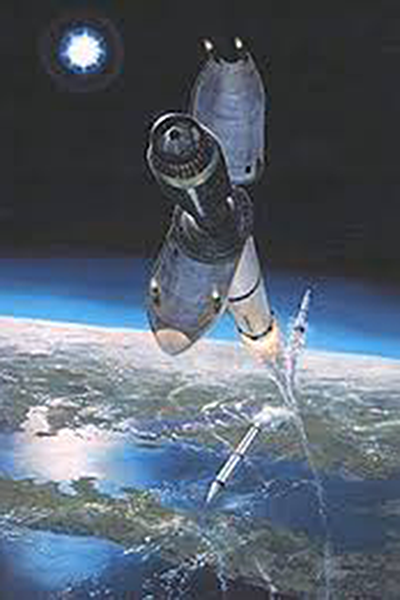
The Conestoga Launch Control System
If knowledge is an intricately constructed model of reality, what does a rocket scientist’s model of a rocket look like? The answer is – it looks like a state machine, a system composed of a hierarchy of sub-systems where the state of any given system in the hierarchy is defined by the pattern of states of its immediate subsystems.
Altair developed an object-oriented software engine to compile a state model of the spacecraft based on a specification created directly by space operations engineers using a simple xml-like file format. No programming skills and no paradigm shift (as in knowledge to inference chains) was required.
Putting large amounts of expertise into the system was relativity easy (acquiring the expertise in the first place was hard – that’s why they call it rocket science) and it ran extremely fast since the basic intelligence was a simple state pattern matching algorithm.
The Conestoga system, arguably the first application of synthetic human knowledge, was widely recognized as the most highly automated launch control system ever built. It performed spectacularly and was delivered for less than 10% of the cost of conventional systems.
The Conestoga Launch Control System
If knowledge is an intricately constructed model of reality, what does a rocket scientist’s model of a rocket look like? The answer is – it looks like a state machine, a system composed of a hierarchy of sub-systems where the state of any given system in the hierarchy is defined by the pattern of states of its immediate subsystems.
Altair developed an object-oriented software engine to compile a state model of the spacecraft based on a specification created directly by space operations engineers using a simple xml-like file format. No programming skills and no paradigm shift (as in knowledge to inference chains) was required.
Putting large amounts of expertise into the system was relativity easy (acquiring the expertise in the first place was hard – that’s why they call it rocket science) and it ran extremely fast since the basic intelligence was a simple state pattern matching algorithm.
The Conestoga system, arguably the first application of synthetic human knowledge, was widely recognized as the most highly automated launch control system ever built. It performed spectacularly and was delivered for less than 10% of the cost of conventional systems.
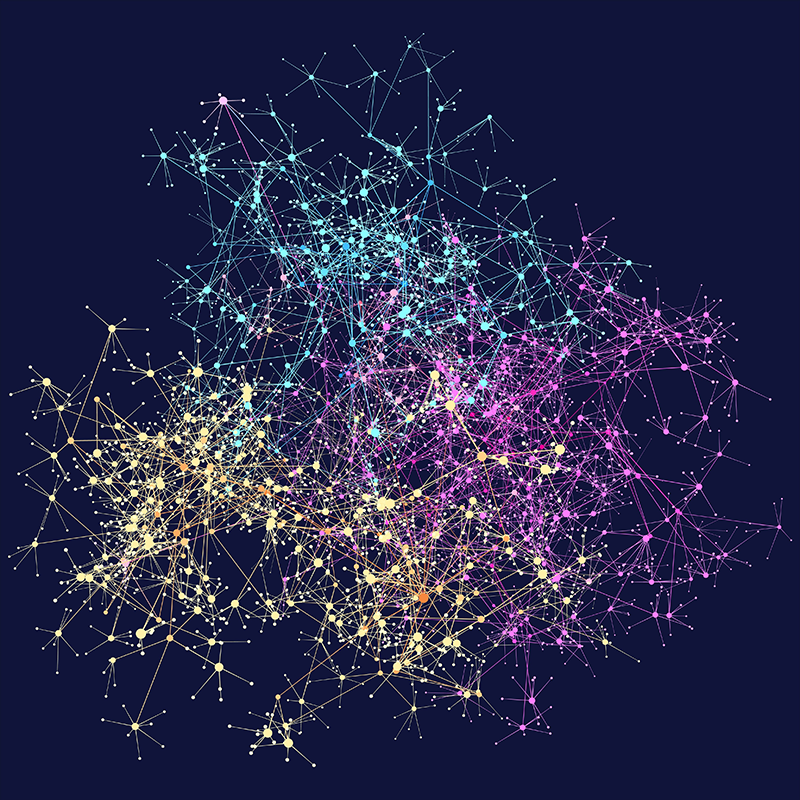
Cognitive Chemistry
If all the expert knowledge needed to understand spacecraft telemetry could be practically encoded for a computer, might it be possible to use similar methodologies to create a general model of the commonsense world?
The average adult is thought to be conversant with tens of thousands of individual concepts. The scope of the problem, of assembling these ideas into the coherent world model that people have, appeared daunting.
Cruse returned to his philosophical roots. Democritus conjectured that if you keep breaking material objects into smaller and smaller parts, eventually you get to parts that are indivisible, which he called atoms. Could this be true of ideas? If so could “atoms of thought” be classified in accordance with unique connection properties to create in effect a “Cognitive Chemistry?” The answer turned out to be Yes!
If all the expert knowledge needed to understand spacecraft telemetry could be practically encoded for a computer, might it be possible to use similar methodologies to create a general model of the commonsense world?
The average adult is thought to be conversant with tens of thousands of individual concepts. The scope of the problem, of assembling these ideas into the coherent world model that people have, appeared daunting.
Cruse returned to his philosophical roots. Democritus conjectured that if you keep breaking material objects into smaller and smaller parts, eventually you get to parts that are indivisible, which he called atoms. Could this be true of ideas? If so could “atoms of thought” be classified in accordance with unique connection properties to create in effect a “Cognitive Chemistry?” The answer turned out to be Yes!
Algorithms vs Data Structures
Experience building practical spacecraft models underscored the same lesson learned through the advent of object-oriented programming languages, that there is an inverse relationship with respect to sophistication in algorithms and the data-structures they process. You can solve problems using unstructured data if you have very sophisticated algorithms, or you can solve problems using simple algorithms if you have sophisticated data structures.
Synthetic Knowledge can be seen as the antithesis of machine learning, because machine learning features highly sophisticated algorithms and vast amounts of simple unstructured data, and requires vast computing resources.
Algorithms vs Data Structures
Experience building practical spacecraft models underscored the same lesson learned through the advent of object-oriented programming languages, that there is an inverse relationship with respect to sophistication in algorithms and the data-structures they process. You can solve problems using unstructured data if you have very sophisticated algorithms, or you can solve problems using simple algorithms if you have sophisticated data structures.
Synthetic Knowledge can be seen as the antithesis of machine learning, because machine learning features highly sophisticated algorithms and vast amounts of simple unstructured data, and requires vast computing resources.
Applied Epistemology

Putting together the pieces
The process by which human knowledge is curated and transformed into a synthetic form for computers is without precedent. It is neither programming, as with computers, nor education via language, as with people. We call it epistemological engineering. At New Sapience we are the world’s first practical otologists and applied epistemologists.
Applied Epistemology (AE) as a development paradigm has an amazing characteristic that is directly the opposite or all other AI methodologies. Both Symbolic AI (expert Systems) and Connectionist AI (machine learning) have an inverse effort to performance curve. They require progressively more resources to achieve a given level of performance. The failure of expert system to scale was proven long ago. The same phenomenon is being dramatically demonstrated with today’s Large Language Models as they consume orders of magnitude more data for incremental improvements in performance.
To understand how AE models are different consider jigsaw puzzles. The goal or desired level of performance is to complete the picture. In the first place, pictures are models and pictures convey information more densely than symbols (“a picture is worth a thousand words”). The effort curve for completing a jigsaw puzzle, measures in fitted pieces per unit of time has a positive curve, the more pieces you fit that faster you go.
Putting together the pieces
The process by which human knowledge is curated and transformed into a synthetic form for computers is without precedent. It is neither programming, as with computers, nor education via language, as with people. We call it epistemological engineering. At New Sapience we are the world’s first practical otologists and applied epistemologists.
Applied Epistemology (AE) as a development paradigm has an amazing characteristic that is directly the opposite or all other AI methodologies. Both Symbolic AI (expert Systems) and Connectionist AI (machine learning) have an inverse effort to performance curve. They require progressively more resources to achieve a given level of performance. The failure of expert system to scale was proven long ago. The same phenomenon is being dramatically demonstrated with today’s Large Language Models as they consume orders of magnitude more data for incremental improvements in performance.
To understand how AE models are different consider jigsaw puzzles. The goal or desired level of performance is to complete the picture. In the first place, pictures are models and pictures convey information more densely than symbols (“a picture is worth a thousand words”). The effort curve for completing a jigsaw puzzle, measures in fitted pieces per unit of time has a positive curve, the more pieces you fit that faster you go.
Watch New Sapience 101 Session 5: SI Origins (27:22)
There once was a cherished American ideal that began in Silicon Valley, the garage startup; a handful of individuals with a truly unique idea invent a new technology that grows to disrupt entire industries. In this session you will discover that the ideal is still very much alive as you learn how New Sapience grew from roots as diverse as philosophy and rocket science. (Click to watch)
First Principles
Deep thinkers and the philosophical minded should start here. Discover how New Sapience is laying the foundations for a new science of machine intelligence.
Cutting Through the AI Hype
Skeptical that ChatGPT and the other chatbots are anything more than “statistical parrots” or “autocomplete on steroids?” Start here for a step-by-step walkthrough of imitative AI today, what it is, what it is not, and what it will never be.
How we intend to build our technology into multiple product lines to create what we anticipate will become an extraordinary business with the potential for explosive growth.
How we got here. Learn how, by taking a contrarian approach, New Sapience solved the problem that no one else could.
By investing in New Sapience, you’re not just supporting innovation. You’re unlocking transformative potential for humanity.
Learn
Origins

